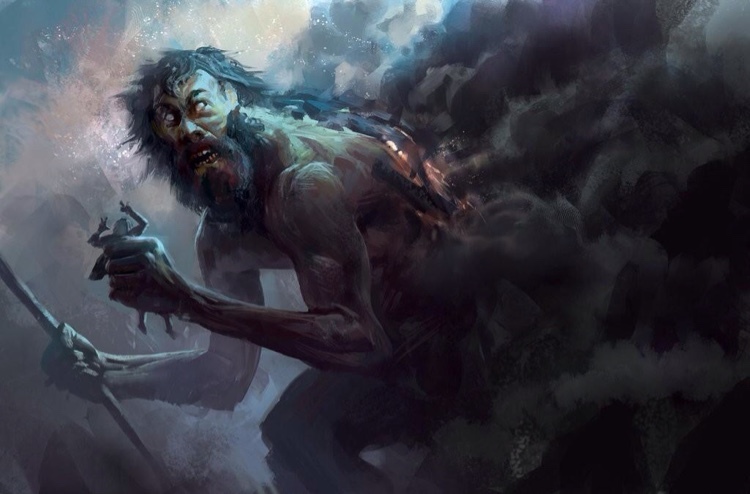------------------- Mahaavatar in India-----------------------
Kriya Yoga
Kriya Yoga is described by its
practitioners as the ancient Yoga system revived in modern times by Mahavatar
Babaji through his disciple Lahiri Mahasaya, c. 1861. To Westerners, it was
brought into popular awareness through Paramahansa Yogananda's book
Autobiography of a Yogi [1] and through Yogananda's introductions of the
practice since 1920. The system consists of a number of levels of Pranayama
based on techniques that are intended to rapidly accelerate spiritual
development[1] and engender a profound state of tranquility and
God-communion.[2]
Yogananda attributes Kriya Yoga
to his lineage of gurus, deriving it via Yukteswar Giri and his master Lahiri
Mahasaya, from Mahavatar Babaji (fl. 1860s). The latter is reported to have
introduced the concept as essentially identical to the Raja Yoga of Patanjali
and the concept of Yoga as described in the Bhagavad Gita.[3]
The story of Lahiri
Mahasaya receiving initiation into Kriya Yoga by the yogi Mahavatar Babaji in
1861 is recounted in Autobiography of a Yogi.[15] Yogananda wrote that at that
meeting, Mahavatar Babaji told Lahiri Mahasaya, "The Kriya Yoga that I am
giving to the world through you in this nineteenth century, is a revival of the
same science that Krishna gave millenniums ago to Arjuna; and was later known
to Patanjali, and to Christ, St. John, St. Paul, and other disciples."
Yogananda also wrote that Babaji and Christ were in continual communion and
together, "have planned the spiritual technique of salvation for this
age."[1][16]
Through Lahiri Mahasaya, Kriya
Yoga soon spread throughout India. Yogananda, a disciple of Yukteswar Giri who
was himself a disciple of Lahiri Mahasaya, then brought Kriya Yoga to the
United States and Europe during the 20th century.[17]
Lahiri Mahasaya's disciples
included his sons, Dukouri Lahiri and Tincori Lahiri, Yukteswar Giri, Panchanan
Bhattacharya, Pranabananda, Kebalananda, Keshabananda, and Bhupendranath Sanyal
(Sanyal Mahasaya).[18]
Legendary powers and age have
been attributed to Mahavatar Babaji by the disciples of Lahiri Mahasaya. These
stories have led many to believe that Mahavatar Babaji is a legendary person,
rather than a real sadhu that was seen by numerous witnesses from 1861 to 1935.
Paramahansa Yogananda, in his
Autobiography, described Mahavatar Babaji’s role on earth:
The Mahavatar is in constant
communion with Christ; together they send out vibrations of redemption, and
have planned the spiritual technique of salvation for this age. The work of
these two fully-illumined masters–one with the body, and one without it–is to
inspire the nations to forsake suicidal wars, race hatreds, religious
sectarianism, and the boomerang-evils of materialism. Babaji is well aware of
the trend of modern times, especially of the influence and complexities of
Western civilization, and realizes the necessity of spreading the
self-liberations of yoga equally in the West and in the East.
In addition, Babaji is reputed to be
ageless, according to some accounts, and about 500 years old around the late
1800s, according to Pranabananda.[4] Yogananda reports that, according to the
disciples of Lahiri Mahasaya, nobody knows Babaji’s age, family, place of
birth, true name, or other details “dear to the annalist’s heart.”[2]
According to Yogananda's
autobiography, he has a sister called Mataji (meaning "Holy Mother")
who also has lived throughout the centuries. Her level of spiritual attainment
is comparable to her brother's, and she lives in a state of spiritual ecstasy
in an underground cave. Although only three pages in the book are dedicated to
her, she is described by Ram Gopal as "young and surpassingly lovely"
as well as a "glorious woman."
Now nobody knows what Babaji's real
name was. Babaji is a title just as Christ is the title for Jesus. Babaji is a
Son of God just like Jesus and became one after the Church began to form.
Babaji was possibly born during the Dark Ages and learned to transcend death
like those of Melchizedek and Enoch in the Bible. To actually have control of
the elements, the Wheel of Life. Babaji also spoke openly to others always
saying he was interested in OUR divine nature, not his own. And that we all
must do the work of the Heavenly Father
Jesus had the most careful education possible as is shown
by the fact that when he was twelve he passed his final exams in the temple of
Jerusalem with the highest honours whilst everyone of his examiners was amazed
by his wisdom and understanding. It is obvious that Jesus wanted to study
further and – above all – practice under the guidance of competent masters. In
Israel he had done what he could. So he went to India and Tibet where he
studied the ancient Vedic tradition, Yoga and Buddhism. At the age of thirty he
returned to Palestine to preach what he had learned. He survived the
crucifixion and returned, once more, to India as convincingly explained by
Holger Kersten in his book ‘Jesus lived in India’.






Comments
Post a Comment